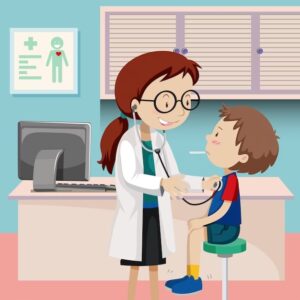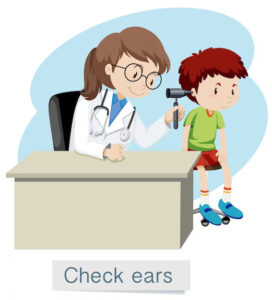Slow learning disability is a term that is sometimes used to describe children who have an IQ between 70 and 85, which is below the average range of 90 to 110. These children comprise about 14% of the population, more than the combined number of children with learning disabilities, intellectual disabilities, and autism.
A slow learning disability is not a formal diagnosis or a specific disorder. It is instead a general label that indicates that a child has difficulty acquiring new skills and knowledge at the same rate as their peers. This can affect their academic performance, social development, and emotional regulation.
Some children may have other conditions contributing to their slow learning, such as attention deficit hyperactivity disorder (ADHD), dyslexia, dysgraphia, dyscalculia, speech and language disorders, or emotional problems.
It is important to note that a slow learning disability differs from other learning disorders, such as dyslexia, dysgraphia, dyscalculia, etc. However, they do not affect the child’s overall intelligence or cognitive ability. Many children with these disorders have average or above-average IQs and are often gifted in other areas.
Therefore, it is essential to distinguish between a slow learning disability and other learning disorders to provide the appropriate intervention and support for each child. A comprehensive assessment by a qualified professional can help determine the nature and extent of the child’s difficulties and recommend the best course of action.
Symptoms and Diagnosis
The signs and symptoms of a slow learning disability may vary depending on the age and developmental stage of the child. However, some common indicators include:

- Low IQ score (below 85)
- Poor academic performance (below grade level)
- Difficulty with language skills (speaking, reading, writing)
- Problem with memory skills (short-term and long-term)
- Difficulty with attention skills (focusing, shifting, sustaining)
- Problem with reasoning skills (logical thinking, problem-solving)
- Difficulty with social skills (making friends, understanding emotions)
- Difficulty with adaptive skills (self-care, independence)
- Low self-esteem and confidence
- Anxiety and depression
To diagnose a slow learning disability, a professional will conduct tests and evaluations to measure the child’s cognitive ability, academic achievement, language, memory, attention, reasoning, social, and adaptive skills. They will also gather information from the child’s parents, teachers, and caregivers to understand their strengths and weaknesses.
The diagnosis of a slow learning disability is based on the following criteria:
- The child has an IQ score below 85
- The child has significant delays in at least two areas of development
- The child’s difficulties are not caused by another condition or disorder
- The child’s problems interfere with their daily functioning
Diagnosing a slow learning disability can be challenging and subjective, as no clear-cut definition or standard exists. Different professionals may use other terms or criteria to describe the same child. Therefore, it is crucial to seek a second opinion if you are unsatisfied with the first diagnosis or have any doubts or questions.
Treatment and Intervention
The treatment and intervention for slow learning disability aim to help the child improve their skills, overcome challenges, and achieve their potential. The main components of treatment and intervention are:

- Individualized education involves creating a personalized learning plan for the child that matches their abilities, needs, and goals. The procedure may include modifications, accommodations, and supports to help the child access the curriculum and participate in classroom activities. The plan may consist of specialized instruction, remedial programs, or tutoring to help the child catch up with their peers and master the essential skills.
- Cognitive training: Remembering, focusing, thinking, and solving problems are examples of cognitive functions, the mental processes that the brain performs.
- The systems and procedures may include mnemonics, visual aids, repetition, chunking, organizing, summarizing, etc. Cognitive training may also involve using computer software or games to stimulate and challenge the child’s brain.
- Mind therapy involves using mind-body techniques to improve the child’s well-being and potential. Mind therapy can help the child relax, cope with stress, boost their mood, increase their self-esteem, and enhance their mind-body connection. Some common types of mind therapy are mindfulness, meditation, yoga, etc. We will discuss more about mind therapy in the next section.
- Parental involvement and guidance: This involves providing the child with a supportive and nurturing environment at home. Parents can help their children by being involved in their education, communicating with their teachers, monitoring their progress, praising their efforts, encouraging their interests, setting realistic expectations, providing structure and routine, modelling positive behaviours, and seeking professional help.
Mind Therapy
Mind therapy is a beneficial technique for children with a slow learning disability. Enhancing their mind-body connection can help them improve their well-being and potential. Mind therapy can also help them relax, cope with stress, boost their mood, increase their self-esteem, and develop positive attitudes.
Mind therapy is founded on the principle that the body and mind are not separate but rather have an impact on one another. By focusing on the present moment and being aware of one’s thoughts, feelings, sensations, and actions, one can achieve a state of calmness, clarity, and balance. This state can positively influence the health of one’s physical, mental, emotional, and spiritual aspects.
Some common types of mind therapy Slow Learning:
To practice mindfulness, one has to pay attention to the present moment with an open and curious mind.
- Mindfulness can help children with a slow learning disability by improving their attention skills, reducing their anxiety and depression, enhancing their self-regulation skills, and increasing their empathy and compassion.
- Meditation: This is a practice of focusing on a specific object, sound, word, or breath. Meditation can help children with a slow learning disability by improving their memory skills, reducing their stress levels, enhancing their mood and creativity, and strengthening their immune systems.
- Yoga: Physical postures, breathing exercises, and meditation are the components of this practice. Yoga can help children with slow learning disability by improving their motor skills, flexibility, balance, coordination, and endurance. By doing yoga, they can also promote their overall wellness, enhance their sleep quality, and decrease their pain and inflammation.
To practice mind therapy at home or in a group setting, you can use some tips and resources such as:
Find a quiet and comfortable place where you will not be disturbed or distracted.
- Select a time of day that matches your schedule and preference.
- Initiate with concise intervals of 5 to 10 minutes and progressively lengthen the time as you grow more relaxed.
- Follow a guided audio or video instruction or use an app or website that offers mind therapy exercises and games.
- Treat yourself with kindness and patience, and do not evaluate your performance or experience.
- Practice regularly and consistently to get the most benefits.
Conclusion
Slow learning disability is a condition that affects many children and can cause them to learn at a slower pace than their peers. However, this does not indicate that they are less capable or intelligent than others. They can overcome difficulties and thrive with proper diagnosis, intervention, and support.
This article explains what a slow learning disability is, how it differs from other learning disorders, and the signs and symptoms to look out for. We have also discussed how to diagnose and treat slow learning disability and what are effective strategies and programs to help your child improve their skills. Finally, we have introduced mind therapy as a beneficial technique to enhance your child’s well-being and potential.
We trust that this article has been informative and helpful for you. If you have a child with a slow learning disability or suspect that they might have it, we encourage you to seek professional help as soon as possible. Don’t forget that you are not isolated in this journey and have many resources and people to assist you. We hope for the best for your child!



